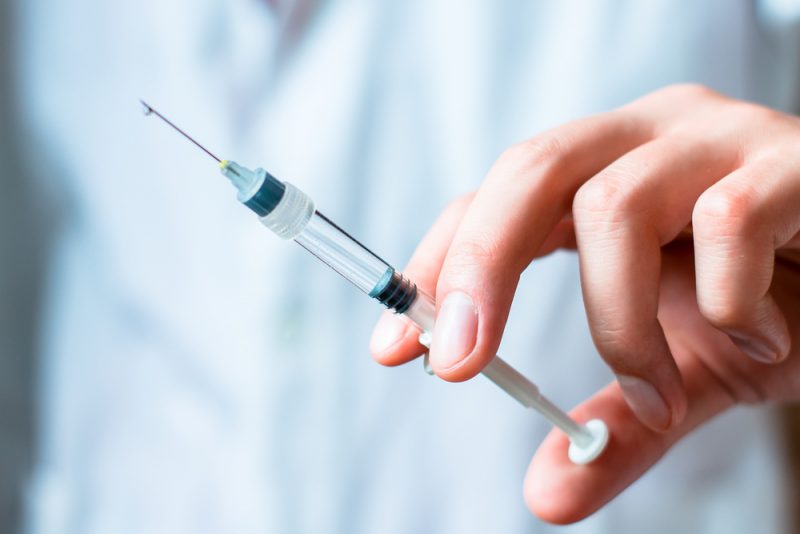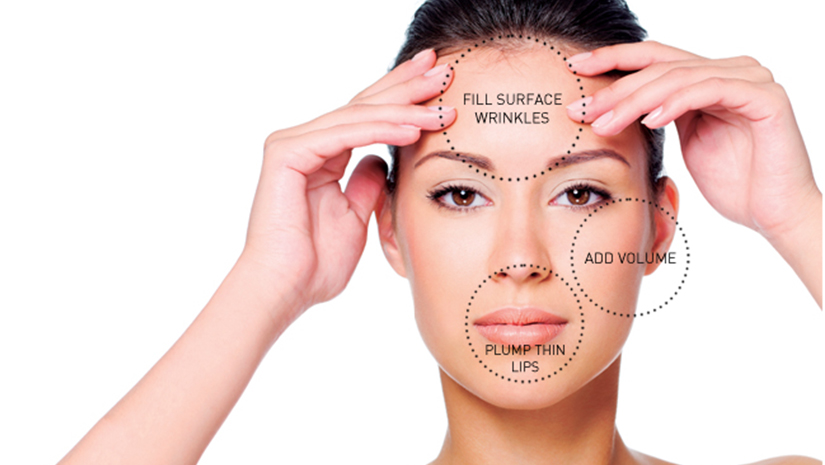Doctors now use a combination of products to address multiple aging issues simultaneously – fillers with smaller particles for fine lines, and fillers with larger particles for deeper lines and to augment facial structure. From familiar products to fillers that are virtually unknown by the average consumer, here is today’s filler lineup:
HYALURONIC ACID
Frequently referred to simply as HA, hyaluronic acid is a naturally occurring substance in your skin that helps to add volume and hydration. HA fillers are synthetically produced, yet almost identical to the hyaluronic acid that occurs naturally in your body. The molecules in HAs bind to water, re-strengthening the support system underneath wrinkled skin.
HAs are used to plump thin lips and to fill facial creases such as nasolabial folds. They’re also sometimes used to fill surface wrinkles and concave scars. HAs are very forgiving; if something goes wrong, or you simply don’t like your results, they are very easy to dissolve. Common HA fillers used include Juvéderm, Restylane, and Perlane. All last about a year and function in the same way.

COLLAGEN STIMULATORS
Today, there are bioengineered fillers that actually stimulate and help you produce your very own collagen. Two products on the market specifically do that job: Radiesse and Sculptra Aesthetic. Radiesse, made up of calcium hydroxylapatite microspheres, a calciumlike product found in human bones and suspended in a gel, is used to fill deeper lines and to add volume to the midface.
In other words, it provides those immediate results you get with HA fillers, but has the potential for longer-term results by means of collagen stimulation. Radiesse is also irreversible. If you don’t like your results, you can’t simply make it go away as you can with HAs. You either have to live with Radiesse or have it surgically removed.
FAT FILLERS
While this is a more complicated process, it’s the most natural of any procedure. Referred to as fat transfer, or fat grafting, the first step is extracting fat from your thigh, butt, or abdominal regions. Next, the fat is separated from the other fluids and injected back into the face. The nasolabial folds, cheeks, tear troughs, scars, and lips are all areas that can be corrected with fat. While a thinner body and fuller face may sound appealing, this is a surgically invasive procedure that usually requires anesthesia, a longer recovery period, multiple office visits, and a hefty price tag. After all that, injected fat is sometimes unpredictable, lasting several years in some patients but only a few months in others.
SCULPTRA AESTHETIC
Sculptra (poly-L-lactic acid microspheres) was originally used to treat facial thinness in HIV patients. However, the FDA approved Sculptra Aesthetic to treat facial folds and wrinkles, with an emphasis on the cheek area and around the mouth. Like Radiesse, Sculptra Aesthetic is used for deep volume restoration. Results are gradual and require multiple treatments; you can expect to undergo three to five injection sessions over a threeto five-month period. Injections are made deep into the skin and, hence, may require a local anesthetic to minimise pain. It can reportedly last up to two years. Sculptra Aesthetic also comes with the long-term benefits of collagen production
Find out more about facial fillers!
Read our FAQ on facial fillers or check our reviews of Manila skin clinics and aesthetics centeers!

